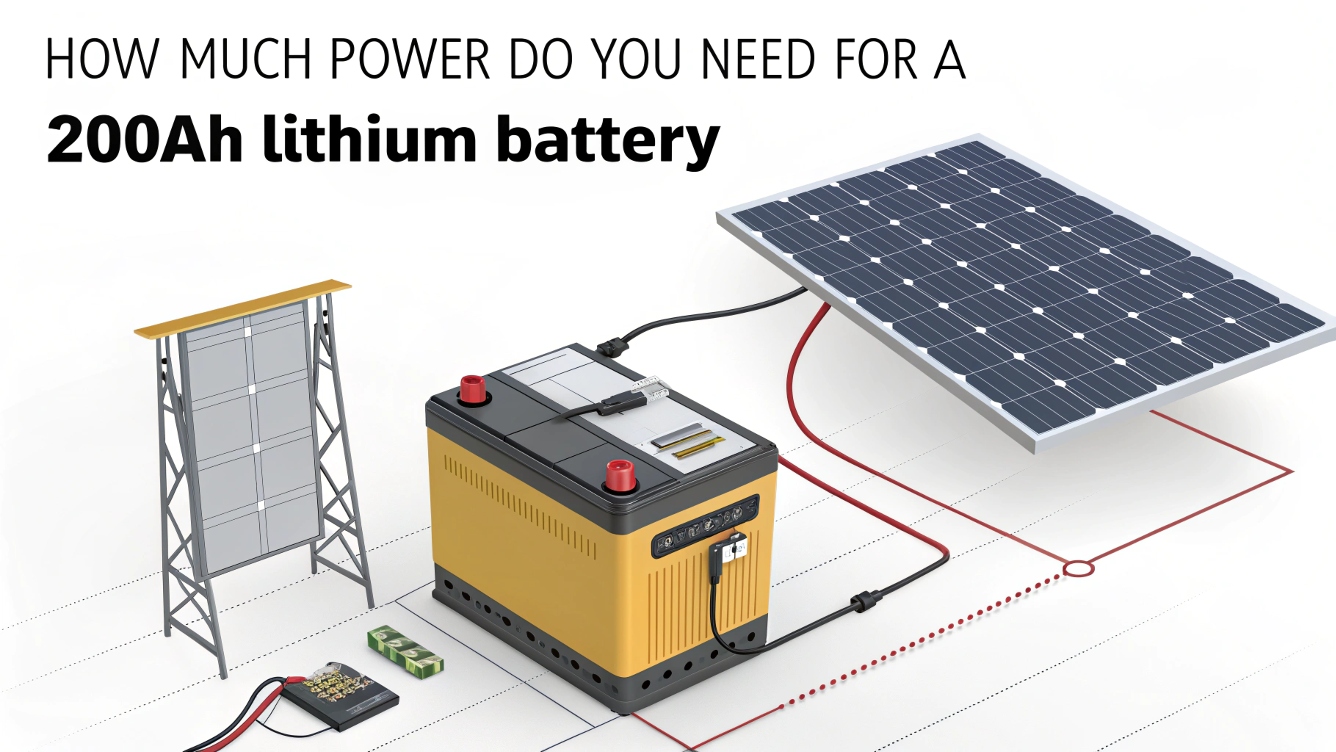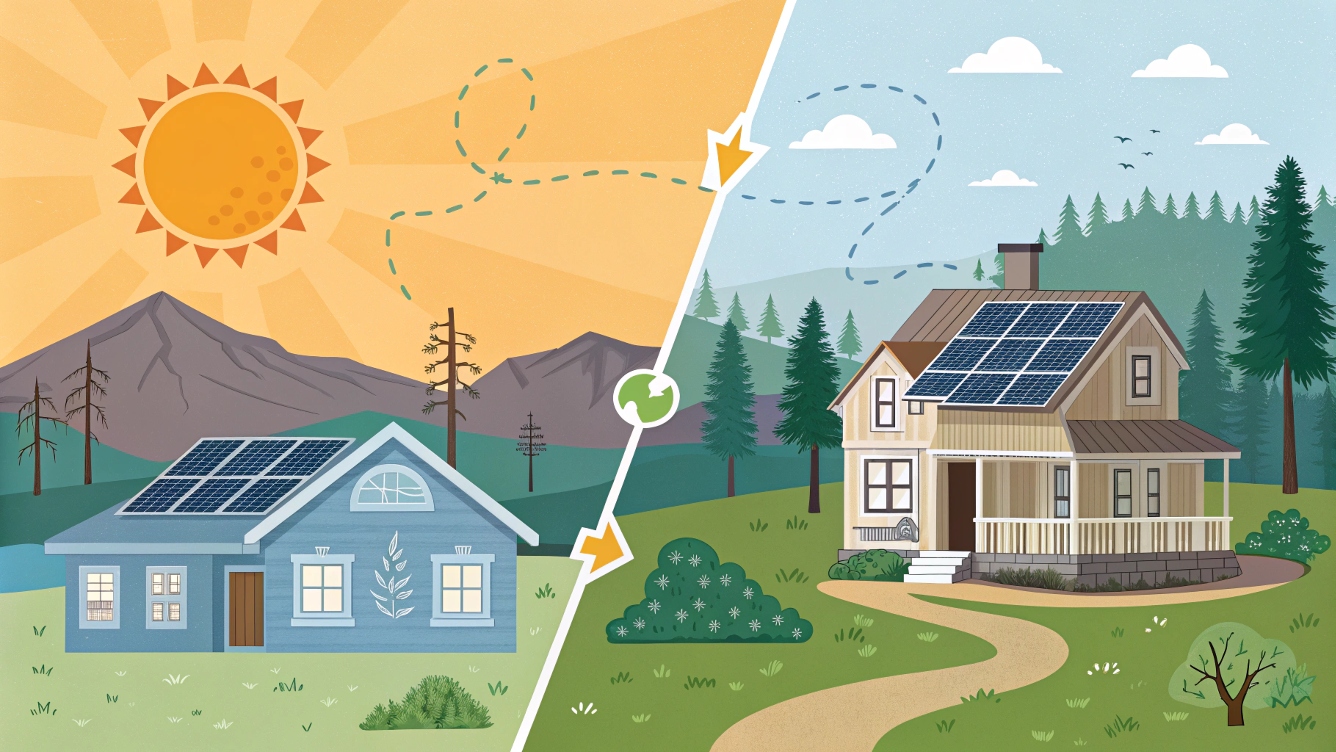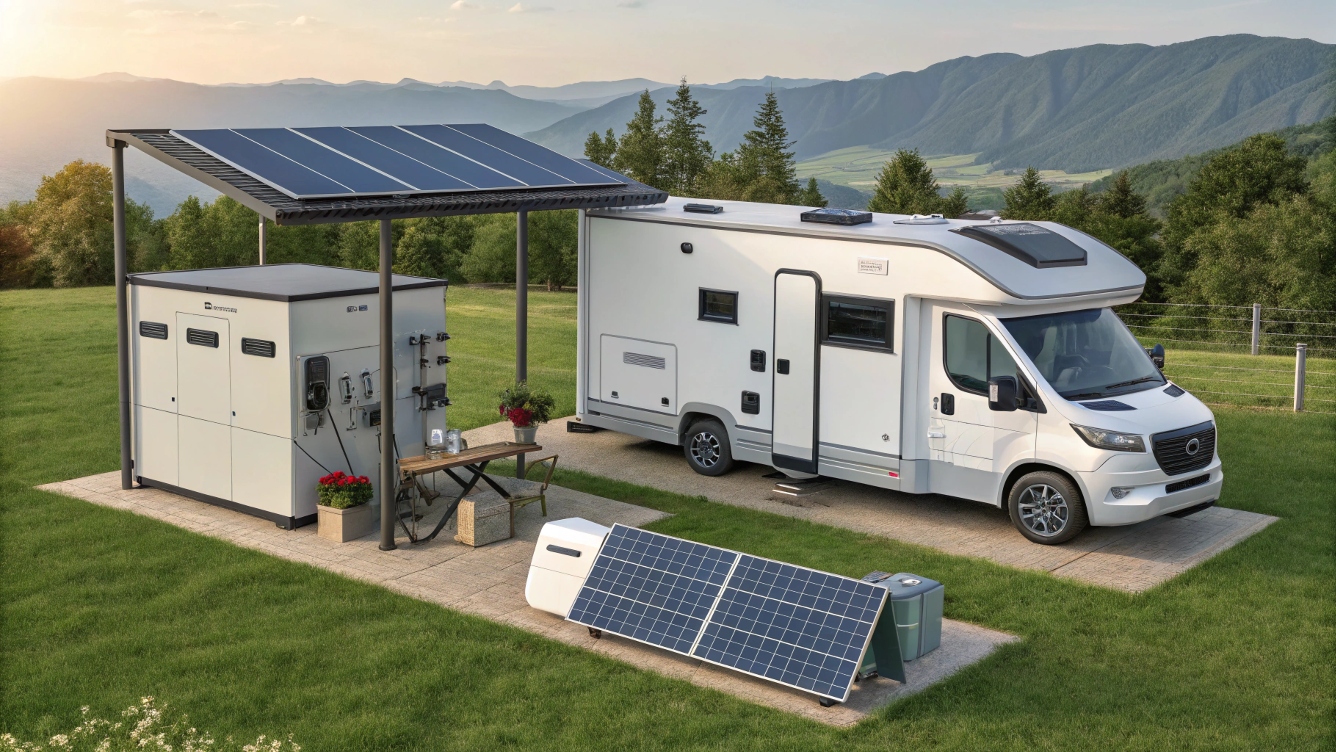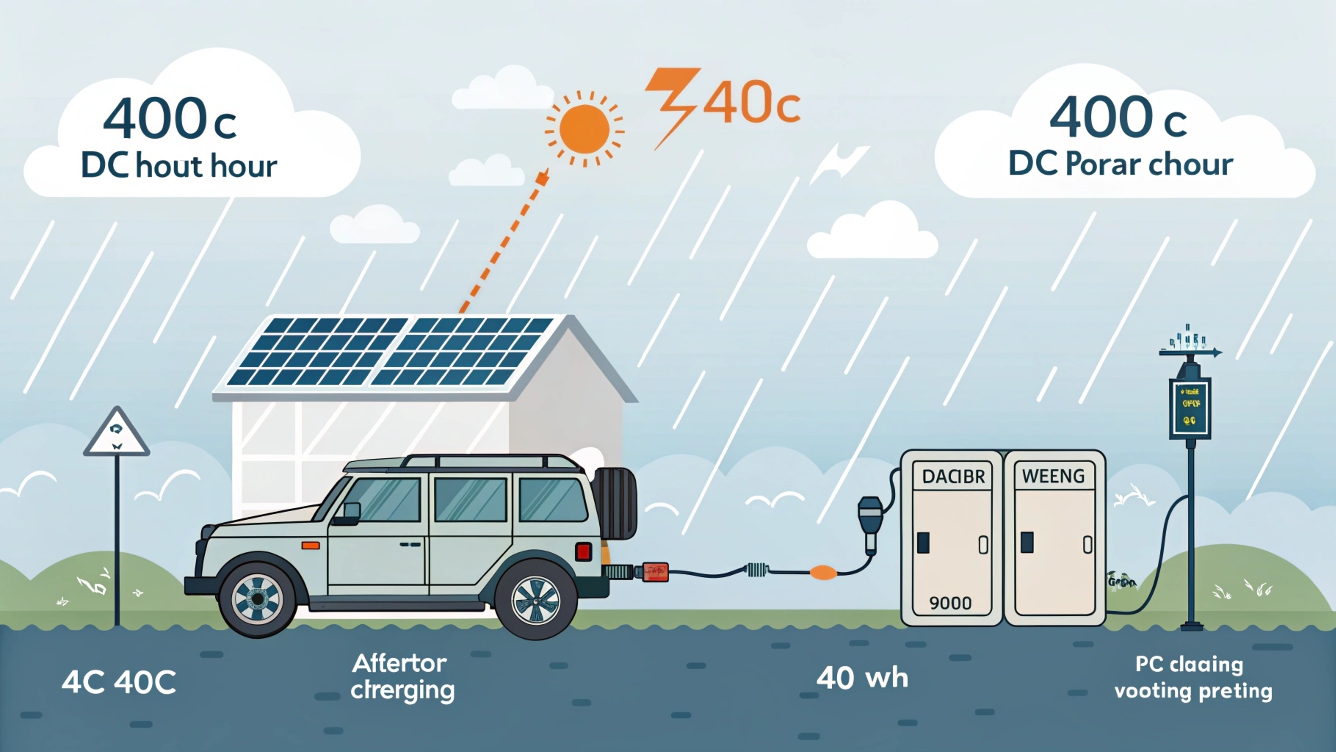¿Cuánta energía solar necesita para una batería de litio de 200Ah?? Una guía práctica
¿Por qué un Batería de iones de litio para energía solar Es un punto de inflexión

Fosfato de hierro y litio (LiFePO4) baterias, como nuestra Serie Modular Solar GYCX, dominan el almacenamiento solar debido a su:
- Longevidad: 3,000–6.000 ciclos a 80% profundidad de descarga (Departamento de Defensa), Supervisión de plomo-ácido por 10x (Wikipedia: Batería de fosfato de hierro y litio).
- Eficiencia: 95-98% Eficiencia de ida y vuelta vs. 70-85% para el ácido de plomo.
- Diseño compacto: 50% encendedor y 30% modelos de plomo-ácidos más pequeños que equivalentes:citar[1]:citar[7].
Pero combinarlos con energía solar requiere una planificación precisa. Vamos a desglosar.
Paso 1: Calcule sus necesidades solares
Almacenamiento de energía de la batería
Primero, convierta la capacidad de su batería a vatios-hora (¿Qué?):
- 12Sistema V: 12V×200Ah = 2,400¿Qué?
- 24Sistema V: 24V×200Ah = 4,800¿Qué?
Consumo diario de energía
Supongamos un 50% Departamento de Defensa (recomendado para la longevidad):
- Energía utilizable: 2,400¿Qué × 0.5 = 1,200¿Qué? (12Sistema V):citar[1]:citar[7].
Fórmula de tamaño de paneles solares
Solar Wattage = (Daily Wh ÷ Peak Sun Hours) × 1.3 (30% buffer for losses)
Ejemplo:
- Ubicación: Arizona (5 horas pico de sol).
- Cálculo: 1,200WH ÷ 5H × 1.3 = 312W.
Esto significa que necesitarías ~300W de paneles solares para recargar una batería de 12V 200Ah diariamente:citar[1]:citar[7]:citar[9].
Factores del mundo real que afectan el rendimiento solar
1. Las horas pico de sol varían según la región
- Arizona: 6.5 horas → Requiere menos paneles.
- Oregón: 3.5 horas → Duplica la potencia:citar[1]:citar[7].
2. Pérdidas del sistema
- Controladores de carga: MPPT (95% eficiencia) VS. PWM (75%).
- Temperatura: Los paneles pierden entre un 0,3 % y un 0,5 % de eficiencia por cada °C por encima de 25 °C:citar[7]:citar[10].
3. El voltaje de la batería importa
Un sistema de 48 V reduce a la mitad el consumo de corriente, reduciendo el espesor del cable y la pérdida de energía. Por ejemplo, Nuestro kit de inicio solar de 48 V se combina perfectamente con baterías de litio de 24 V:citar[5]:citar[9].
Configuraciones solares recomendadas
Opción 1: Configuración básica fuera de la red
- Paneles: Tres paneles monocristalinos de 100W (300W total).
- Controlador de carga: 40Un MPPT (admite hasta 520 W para sistemas de 12 V).
- Batería: Batería única LiFePO4 de 200 Ah.
Mejor para: Cabañas de fin de semana o viajes en autocaravana con uso moderado de energía:citar[1]:citar[9].
Opción 2: Copia de seguridad doméstica a tiempo completo
- Paneles: Seis paneles bifaciales de 200W (1,200W total).
- Controlador de carga: Dos controladores MPPT de 60 A.
- Banco de baterías: Cuatro sistemas de batería apilables (9.6KWH Total).
Mejor para: Refrigeradores eléctricos, zapatillas, e iluminación LED 24/7:citar[7]:citar[9].
Optimice la eficiencia con Controladores de carga MPPT
Los controladores MPPT maximizan la captación solar ajustando las relaciones voltaje-corriente. Por ejemplo, Nuestro GYCX Solar MPPT Pro aumenta la eficiencia al 25% en comparación con los modelos PWM. Beneficios clave:
- Rango de voltaje más amplio: Maneja sistemas de 12 V a 48 V.
- Soporte para clima frío: Funciona hasta -30°C.
- Monitoreo Bluetooth: Seguimiento del rendimiento a través de un teléfono inteligente:citar[7]:citar[9].
Soluciones híbridas para un clima impredecible
1. Carga del alternador
Combine energía solar con un cargador DC-DC para recargar baterías mientras conduce. Un cargador de 40 A añade ~480 Wh por hora de conducción:citar[3]:citar[9].
2. Copia de seguridad del generador
Un generador de propano de 2000 W puede recargar una batería de 200 Ah en 4 a 6 horas durante períodos nublados:citar[7].
3. Expandir con Sistemas de batería apilables
Comience con una unidad de 200 Ah y agregue módulos según sea necesario. Por ejemplo:
- Año 1: 200ah + 600W solar (necesidades básicas).
- Año 3: 400ah + 1,200W solar (agrega soporte HVAC):citar[1]:citar[9].
Desglose de costos: Presupuesto vs. Construcciones premium
| Componente | Presupuesto ($) | De primera calidad ($) |
|---|---|---|
| 200AH Batería | 1,200 | 1,800 (Apilable) |
| Paneles solares (600W) | 750 (escuela politécnica) | 1,500 (Minutos mono) |
| Controlador MPPT | 120 (40A) | 300 (60Un bluetooth) |
| Total | 2,070 | 3,600 |
Oferta de sistemas premium 30% retorno de la inversión más rápido y garantías más largas:citar[1]:citar[7].
Preguntas frecuentes: Respuestas de expertos
q: ¿Puedo usar un panel de 200W para una batería de 200Ah??
A: Sí, pero tardará ~3 días en recargarse por completo. Para uso diario, opte por 300–400W:citar[9].
q: ¿Cuánto tiempo tarda la carga en días nublados??
A: La producción cae entre un 70% y un 90%. Un sistema de 300 W puede tardar entre 2 y 3 días:citar[7]:citar[10].
q: ¿Son seguras las baterías de litio en los vehículos recreativos??
A: Sí! Nuestro batería de iones de litio para solar Incluye BMS incorporado para protección contra sobrecarga/sobrecalentamiento.:citar[1]:citar[7].
Conclusión: Construya un sistema solar preparado para el futuro

Una batería de litio de 200 Ah normalmente necesita entre 300 y 600 W de paneles solares., dependiendo de la ubicación y el uso. Combínalo con Controladores de carga MPPT y sistemas de batería apilables para escalabilidad y eficiencia. En GYCX Solar, Ofrecemos kits personalizables para cada necesidad, desde aventuras en vehículos recreativos hasta hogares fuera de la red.
Siguientes pasos:
- Utilice nuestra Calculadora Solar para un plan personalizado.
- Explorar Kits de paneles solares con componentes preconfigurados.
- Mire nuestros tutoriales de instalación para evitar errores comunes.
Referencias
- Eficiencia de la batería de litio: Wikipedia: Batería de fosfato de hierro y litio.
- Datos de irradiancia solar: Base de datos nacional de radiación solar del NREL.


